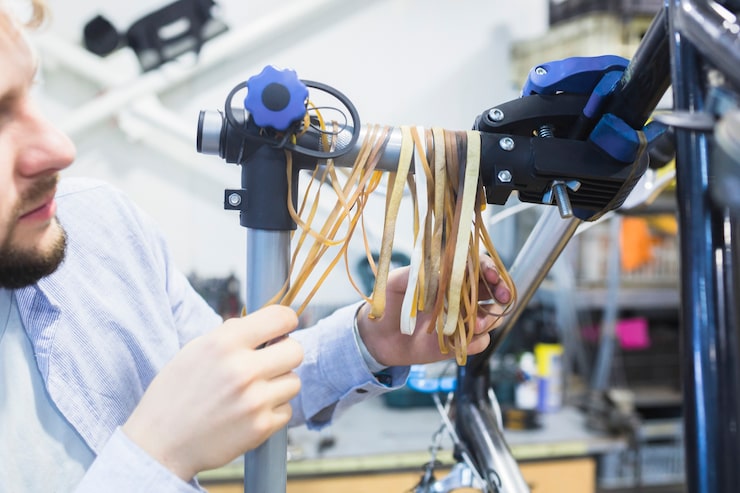A plastic extruder is a crucial machine in the manufacturing industry, widely used to transform raw plastic materials into a variety of usable shapes and products. At the heart of this process lies the extruder for plastic, a sophisticated device designed to melt, mix, and shape plastic resins into continuous profiles or objects. Understanding what a plastic extruder does is essential for industries that rely on plastic fabrication, including packaging, automotive, construction, and consumer goods.

The primary function of a plastic extruder is to convert solid plastic materials, such as pellets, granules, or powders, into a molten state, and then force this molten plastic through a shaped die to form a continuous profile. This profile can then be cut or shaped further into finished products. The extrusion process is continuous, allowing manufacturers to produce long lengths of pipe, tubing, sheets, films, or custom profiles efficiently and consistently.
Inside the extruder for plastic, the operation begins with feeding raw plastic materials into the hopper. The material then enters the heated barrel where a screw rotates to convey the plastic forward. This screw performs multiple roles: it pushes the plastic, generates heat through friction, and thoroughly mixes the resin to ensure uniform melting. The precision and design of the screw are critical because they directly impact the melting quality, flow rate, and consistency of the plastic melt.
Once the plastic reaches a molten, homogeneous state, it is forced through a die that shapes the plastic into the desired cross-sectional form. The die’s design determines the product shape, whether it be a pipe, sheet, film, or a complex profile. The molten plastic exits the die and immediately undergoes cooling to solidify and maintain the intended shape and dimensions. Proper cooling is vital to prevent deformation, warping, or internal stresses within the product.
A plastic extruder also controls key processing parameters such as temperature, pressure, and screw speed. Temperature zones along the barrel are precisely regulated to gradually melt the plastic without degrading it. Excessive heat can cause polymer breakdown, reducing the strength and quality of the final product, while insufficient heat results in incomplete melting and poor surface finish.
Plastic extruders come in various configurations, including single-screw and twin-screw extruders. Single-screw extruders are commonly used for standard melting and shaping operations due to their simplicity and cost-effectiveness. Twin-screw extruders provide better mixing capabilities and are preferred when compounding additives, fillers, or recycling plastic waste, as they offer more thorough homogenization.
One of the key benefits of the plastic extrusion process enabled by an extruder is its versatility. The extruder can handle a wide range of thermoplastics, such as polyethylene (PE), polypropylene (PP), polyvinyl chloride (PVC), acrylonitrile butadiene styrene (ABS), and more. This versatility allows manufacturers to produce a broad spectrum of products catering to different industries and applications.
Plastic extruders are also valued for their efficiency and cost-effectiveness. Because extrusion is a continuous process, it can produce large quantities of product with minimal downtime. The extrusion process often involves less waste compared to other plastic forming methods, which further reduces costs and environmental impact.
Automation and control technologies integrated into modern extruders improve consistency and reduce human error. Advanced control systems monitor variables like melt temperature, pressure, and screw speed in real time. This capability allows for quick adjustments to optimize the extrusion process and maintain product quality.
In addition to shaping plastic products, plastic extruders also play a significant role in compounding. Compounding involves mixing plastics with additives like colorants, stabilizers, flame retardants, and reinforcements to enhance material properties. Twin-screw extruders are particularly effective for compounding due to their superior mixing ability, which results in uniform dispersion of additives.
The extruder for plastic also supports sustainable manufacturing practices. Many extruders are designed to process recycled plastic materials, helping companies reduce raw material consumption and lower environmental footprints. By adapting processing conditions and screw designs, extruders can handle a range of recycled resins without sacrificing product quality.
Despite its many advantages, plastic extrusion requires careful process control and maintenance. Factors such as die design, melt temperature, cooling rate, and screw condition must be optimized to prevent defects such as surface blemishes, dimensional inconsistencies, or weak mechanical properties. Regular maintenance of the extruder ensures consistent performance and extends machine lifespan.
In summary, a plastic extruder serves as the central machine that melts, mixes, shapes, and cools plastic materials into continuous profiles or products. By efficiently transforming raw plastic into a variety of shapes, the extruder supports countless industrial applications and enables high-volume manufacturing with excellent consistency and quality. For businesses in the plastics industry, understanding the role and operation of a plastic extruder is fundamental to optimizing production and delivering value to customers.


